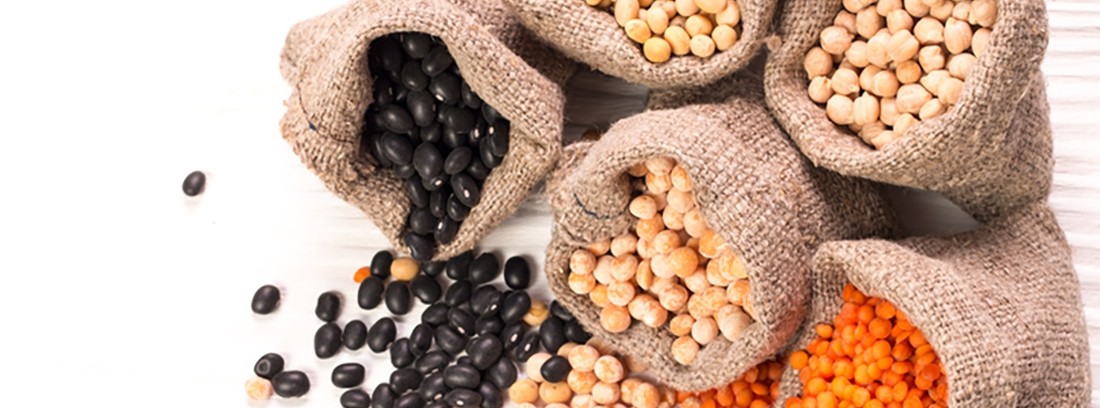Vegetable proteins, there are also

When we talk about immediately, foods such as meat, fish, eggs… mainly foods of animal origin come to mind. It is true that the biological value of proteins, or what is the same, the capacity of use by art of our organism, is lower in the case of vegetarian food. That does not mean that you cannot follow a diet with a good protein intake without the foods that we have mentioned before.
Combination of vegetable protein foods
When a food contains different essential amino acids but one of them is in insufficient quantity we speak of a limiting amino acid. In this case, we cannot consider that this food provides us with a complete protein supply. This happens in several vegetables but this does not mean that we cannot obtain a good nutritional contribution with them, since we can achieve it if we combine the foods properly. For example, legumes and nuts they are deficient in methionine and cereals and seeds are deficient in lysine.
Sometimes, in order to achieve a greater variety in the diet without giving up an interesting nutritional value, apart from the use of vegetable food combinations to obtain more complete vegetable proteins, the form of preparation and consumption of the most protein-rich plant foods.
High protein vegetables
To obtain protein we must not only rely on foods of animal origin (in fact, almost all foods contain protein). Within the plant kingdom, the food groups richest in protein are the legumes, seeds, nuts, and grains like oats and wheat.
Legumes
They are generally considered good sources of vegetable protein, although we must bear in mind that the amount of protein they contain can vary greatly from one legume to another. For example, from 17% of beans to 42% of soybeans. The biological value of these proteins is conditioned by the low amount of sulfur amino acids such as methionine and cystine they contain, so it is interesting to combine them with cereals. Some examples of legume-based foods are:
- TOFU: it is obtained from the coagulation of the soy drink or smoothie, which in turn is achieved by soaking, grinding and straining the soy beans. Once coagulation is done, it is pressed and generally presented in cubes. It has an appearance similar to fresh cheese and has a very mild flavor, which is why it is often marketed smoked or with aromatic herbs.
- TEMPEH: it is also a soy-based product that in this case is obtained by fermenting whole grains of white soybeans. The flavor of tempeh is strong and usually comes in the form of veggie burgers.
- HUMUS: is a paste or puree made from chickpeas and tahini, seasoned with different ingredients such as lemon, cumin and mint.
Nuts and seeds
The nutritional composition of nuts is highly variable but, as with legumes, its combination with cereals is interesting. This is an example of a product made from sesame seeds that is very nutritious:
- TAHINI: it is a paste made of sesame or sesame seeds, and which constitutes one of the typical ingredients of hummus.
The cereals
The protein composition of the various cereal flours is very different, although in general we can verify that they are foods low in lysine and also low in methionine, especially the proteins of wheat, oats, barley, rye and corn. Below we collect a product made from wheat gluten that is used as "vegetable meat":
- SEITÁN: obtained by cooking wheat gluten and extracting the starch. Subsequently, the product is boiled in a broth together with soy or tamari sauce, kombu seaweed and ginger. It is used as "vegetable meat", in the form of meatballs for example. It can be prepared in many ways, fried, stewed, breaded, etc.
(Updated at Apr 14 / 2024)